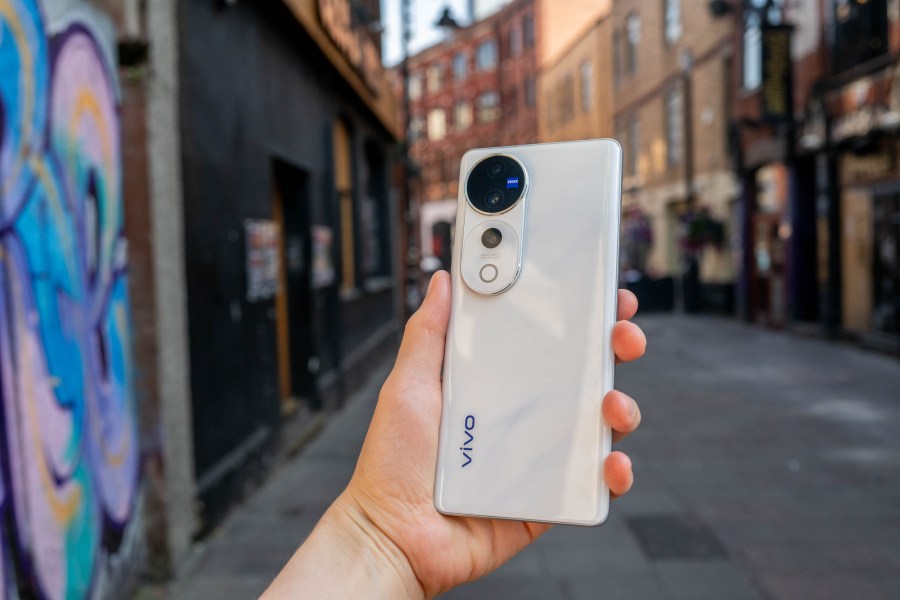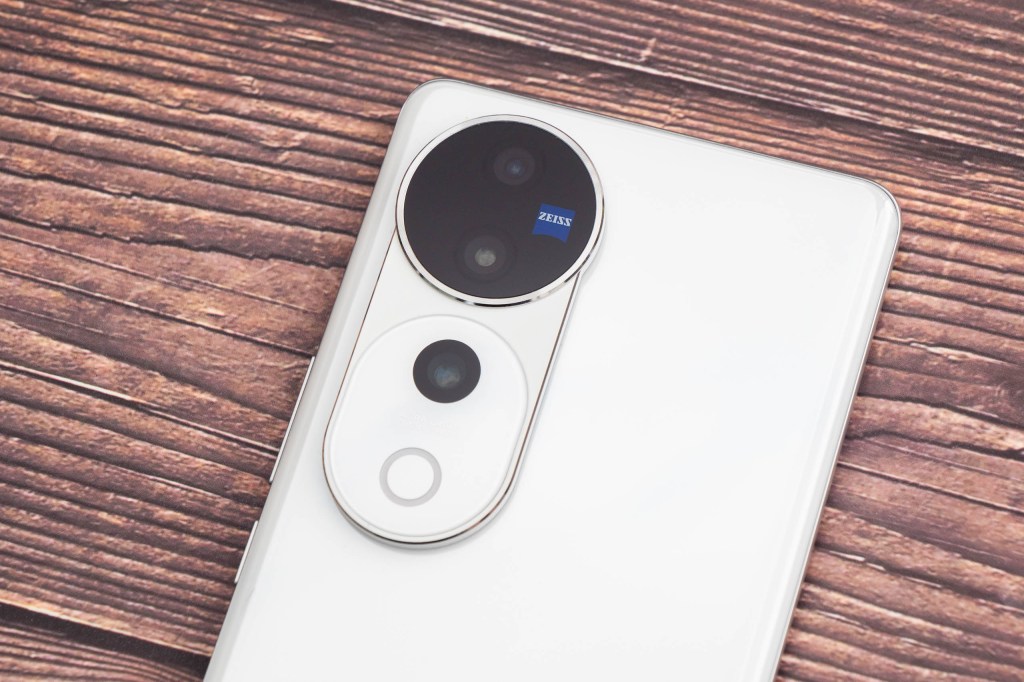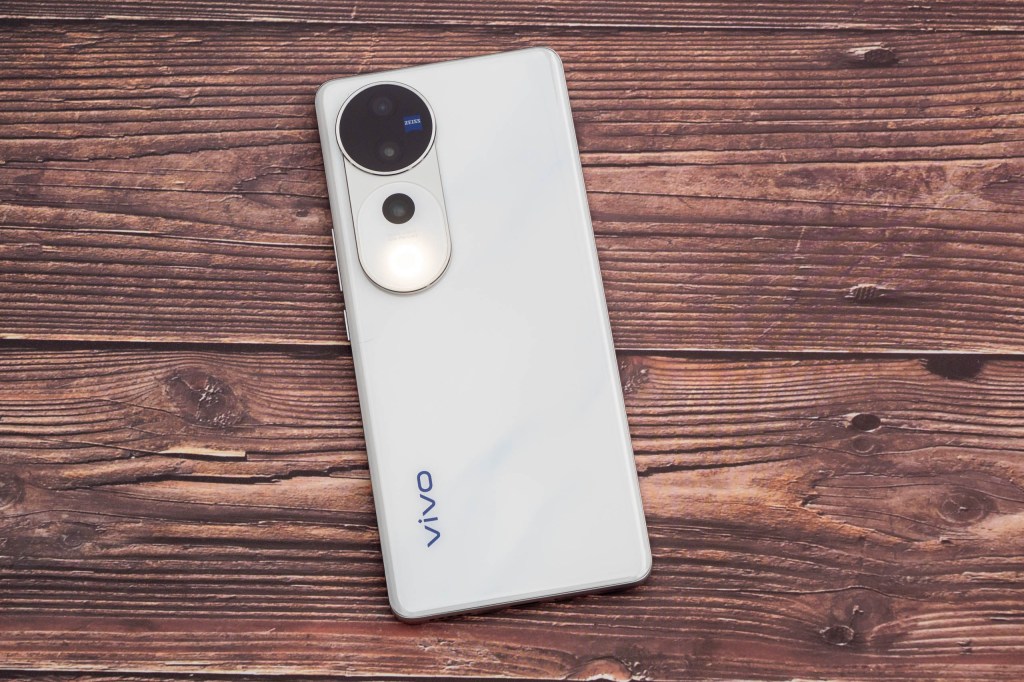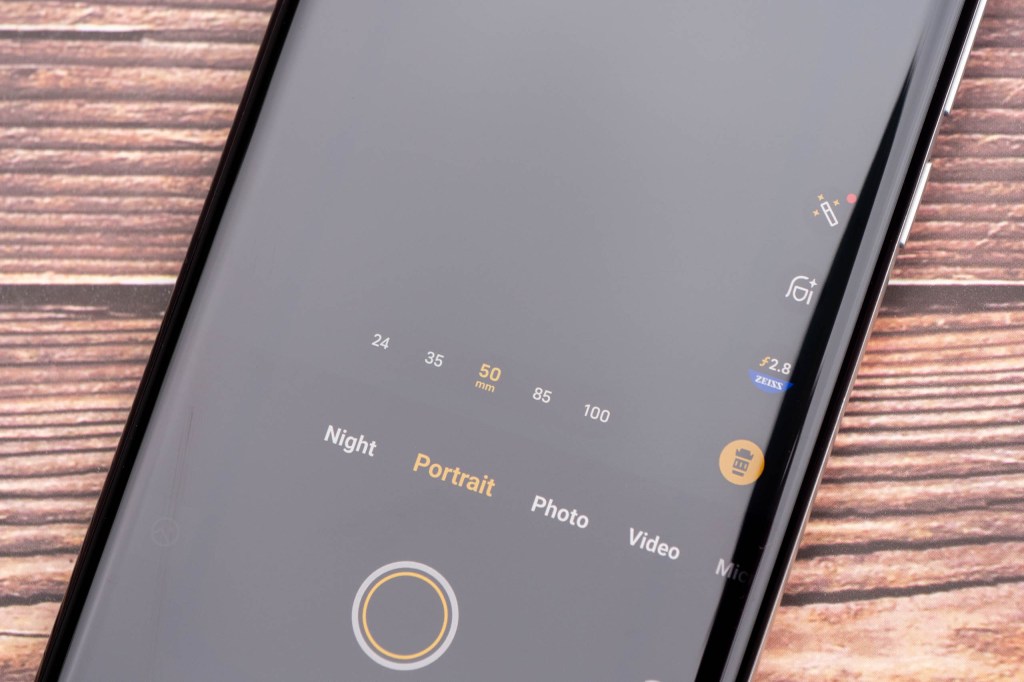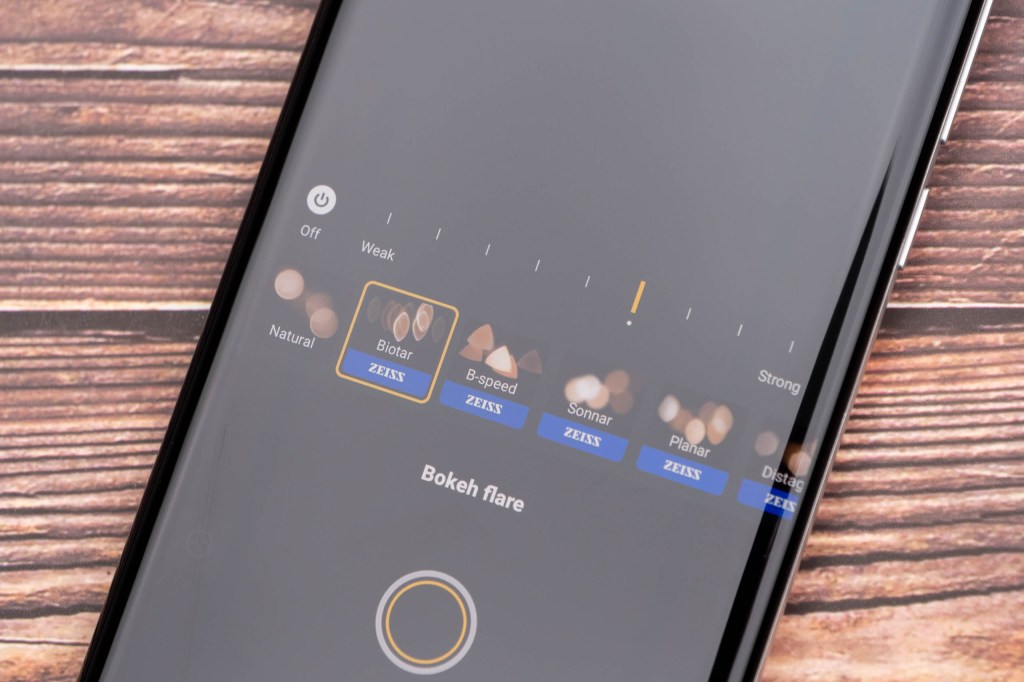Amateur Photographer verdict
An affordable smartphone with Zeiss triple optics that captures beautiful portraits. It is not a huge update over its predecessor, but in terms of hardware it has seen some useful improvements- Three Zeiss lenses
- Four 50MP sensors (including the selfie camera)
- High-resolution selfie camera with AF
- 5500mAh battery and IP68 rating
- Only available in limited markets for now
- No automatic macro mode
- Short telephoto zoom
- Camera setup almost identical to V30 Pro
With the Vivo V40 Pro we’ve got another affordable smartphone with a range of interesting specs. It’s got Zeiss triple optics and does especially well for portraits. In terms of the camera it’s not really an upgrade from the predecessor, but there’s some welcome improvements in terms of other aspects of the hardware. Overall, it’s a great option – hopefully it will come to more markets around the world in time.
One of several Chinese brands currently bringing lots of high-quality smartphones to the market, Vivo’s point of difference from the others is that it has worked with noted lens manufacturer, Zeiss, for the optics. This is a partnership that has been going for a while now, with the latest V40 Pro offering specific portrait photography functionality, such as an “aura” light and a well-featured portrait mode.

Vivo V40 Pro at a glance:
- 50MP f/1.9, 23mm wide lens, AF, OIS
- 50MP f/2.0, 15mm ultrawide lens, AF
- 50MP f/1.9, 50mm telephoto / portrait lens, AF, OIS
- 50MP f/2.0 selfie camera with AF
- 4K video up to 60fps
- 6.78” AMOLED screen, 4500 nits peak brightness
- Operating system – Funtouch OS 14, based on Android 14
- Processor – MediaTek Dimensity 9200+
The V40 Pro sits above the standard V40, offering an extra lens compared to that lower priced model. The V40 range comes only a few months after the V30, and there doesn’t appear to be a huge amount of difference between it and its predecessor, at least in terms of the camera. The older model was also designed with portrait photography in mind.
This time around it seems that some added functionality, such as a waterproof body and a redesigned lens array is what Vivo hopes will tempt you away from the likes of the iPhone and the Samsung, and opt for this instead.
It’s also available in different markets from the V30 Pro. At the time of writing, the Vivo V40 Pro was only available in India, with promises that it will be made available in “other markets” to follow. The V30 Pro never made it to big markets such as the US and UK, so it’ll be interesting to see if the same is true of the V40 Pro.
How we test phones
We review smartphones from the perspective of choosing one for its photography and camera performance. We look at what the Vivo V40 Pro offers, and the features included for photography and video, paying particular attention to the cameras on the phone, photo editing capabilities, as well as the output from each different lens.
Features
As is starting to become the norm now for flagship models, the V40 Pro has a triple lens setup – as mentioned, all three have been made in partnership with Zeiss. What is a little more unusual is for all three to have high resolutions – all three here have 50MP, with two of the sensors (the wide and the portrait) having Sony sensors. This should, in theory at least, give us pretty good image quality.
The main camera has a 23mm f/1.9 equivalent lens, while the ultrawide is 15mm f/2.0. The third lens is a 50mm f/1.9 equivalent – this makes it quite a bit shorter than many of the telephoto lenses we usually find on smartphones, but perhaps makes sense when portraits is the key selling point of this lens.
Speaking of which, as we saw in the V30 Pro, we’ve got an “Aura light” here for the V40 Pro – although this time it has been upgraded. It promises to be three times brighter than its predecessor, and 50 times softer when compared to a “regular” flash. Vivo doesn’t say what it means by regular flash – whether they mean on a smartphone, camera, or external flash. Either way, it should give a softer and more flattering effect. Another new feature is the ability to use different illuminations depending on how close to the subject you are.
More portrait goodies come in the form of different recreations of Zeiss lenses in the camera app, as well as different smoothing and bokeh effects. Video recording is available up to 4K 60fps, as well as an array of other video modes such as slo-mo and so on.
The front camera has some great specifications for this price point. It’s 50MP, also has Zeiss optics with an f/2.0 lens and AF. This is much better than the selfie cameras you’ll find on even top-end flagships such as the iPhone 15 Pro Max.
The battery has seen an improvement, now coming in at 5500mAh – sadly there’s still no wireless charging, although there is quick charging.
Handling and Design
For a phone which has a 5500 mAh battery, the Vivo V40 Pro is impressively slim. It’s also got neatly rounded edges and a curved screen giving it a very sleek and attractive appearance. I’ve been using the “Moonlight White” colour way, which has a marble like appearance on the back.
Vivo says that the V40 Pro has a “Comprehensive Cushioning Structure”, which is designed to improve durability. It also has Schott Alpha glass to withstand drops, along with a reinforced frame. Overall it’s pretty nice looking and seemingly quite tough, but, the phone is pretty slippy so I’d encourage the use of a case. Luckily, a simple clear one comes in the case so you can protect it right from the get go. The V40 Pro also now has IP68 dust and waterproofing, which is a notable improvement from the V30 Pro, which only had IP54 (essentially making it splashproof, rather than submersible).
The screen size is 6.78-inches, placing it at the slightly larger end of the scale. Whether you like big smartphones is a matter of personal preference, but it certainly shows off your photos and videos very well. The screen is also nicely detailed and with its 4500 nits maximum brightness (an improvement from the V30 Pro’s 2800 nits peak) great to look at – again it’s pretty impressive at its mid-range price point.

Although the camera specifications appear to be very similar when compared to the predecessor, the housing for the units has changed. They’re now found in a circular design, rather than square. It looks a bit more unusual and attractive, compared with the standard or average look of the predecessor. The aura light is also much smaller (albeit more powerful in output) than before.
Another thing that comes in the box is a fast charger. It’s disappointing not to see wireless charging – personally I like to be able to just plonk my phone on a wireless charger, but it’s not unusual for mid-range phones not to offer it.
Native camera app
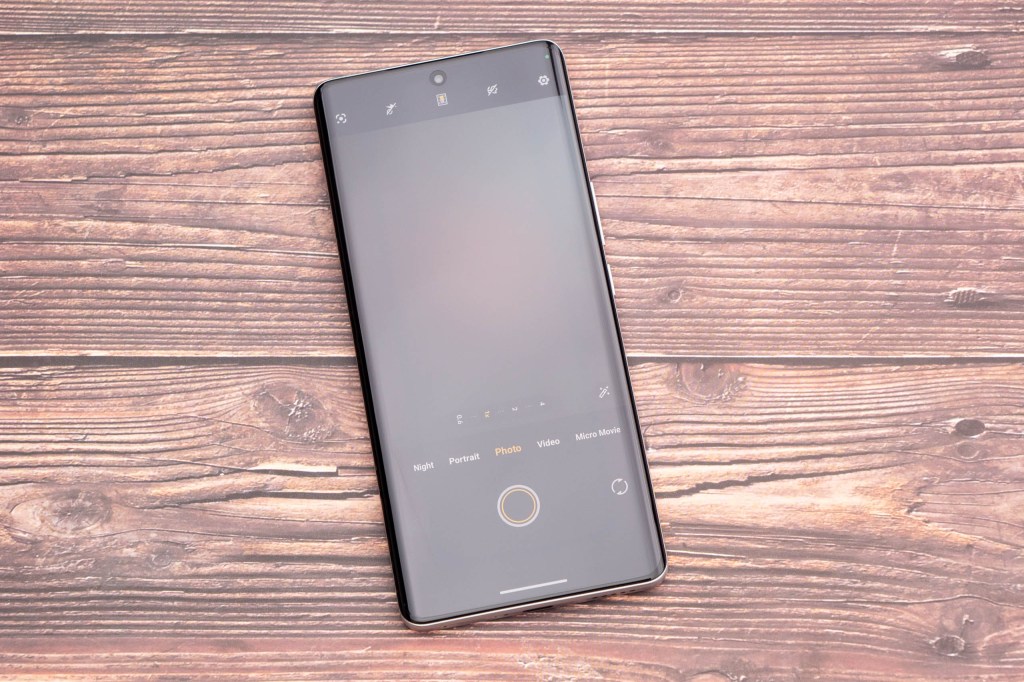
There’s a lot going on in the V40 Pro’s native camera app, with both straightforward options that allow you to simply point and shoot, as well as more advanced and complex modes.
The default shooting mode is Photo, which is what most will probably use for the majority of their shots. You can access any of the three lenses in this mode, as well as pinching to zoom to 50x digital zoom.
Three different colour options are available to shoot in, with the default being “Vivid”. I used this most of the time as it produced bright and punchy colours. But there’s also “Textured” and “Zeiss Natural” – the latter of which is designed to be a little bit more muted.
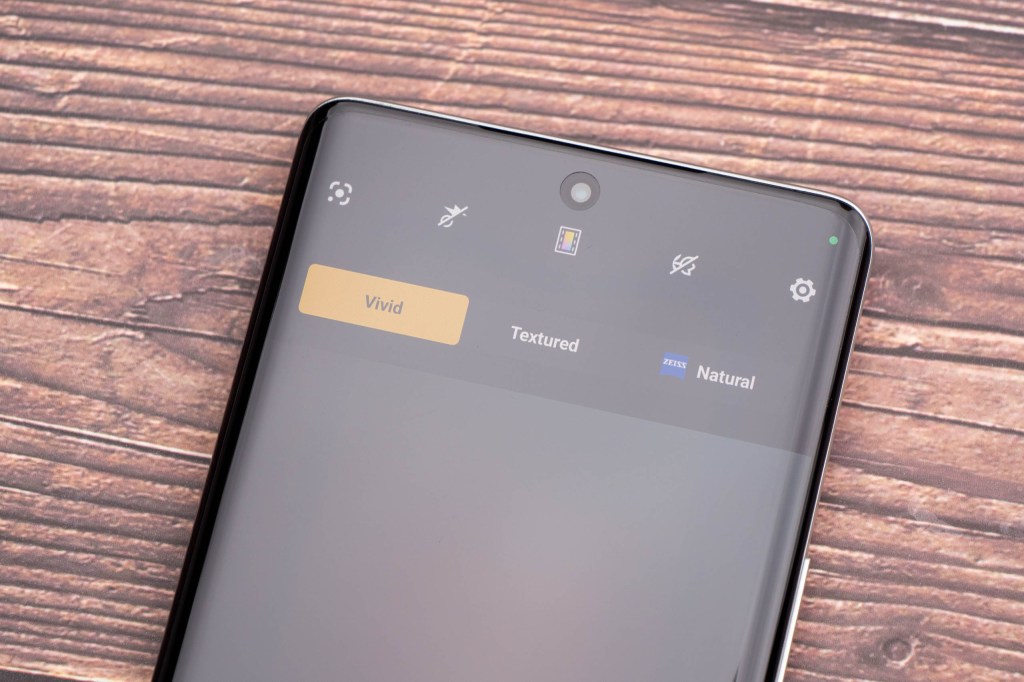
As I found with the V30 Pro, there’s no automatic switching on of a macro mode here, which is a shame. You can tap Super Macro if you want to get very close to a subject though – it seems to work by switching to the ultrawide camera and cropping afterwards. Other shooting modes include Pro, for taking control of lots of different parameters and shooting in raw mode.
Portrait mode is very comprehensive, which makes sense considering Portraits is the USP of this device. You can choose between different focal lengths, which are laid out as 24, 35, 50, 85 and 100mm. Alternatively if you press the lens icon, you can access the “Portrait lens kit”, which is essentially some presets that you can work with, for example “24mm Landscape portrait”, or “50mm natural portrait”, “100mm close-up” and so on. Some of these have different colour tones so are worth experimenting with. You can also choose the shape and style of bokeh (or switch it off entirely). The bokehs have been designed to recreate Zeiss lenses, so for example you can have “Planar” (oval shaped) bokeh, or “B-speed” (triangular shaped). You can of course go for simple rounded bokeh too.
There’s “Beauty” options which are switched on by default. This goes overboard with smoothing out skin and adding fake make-up, so your portraits tend to come out looking fake/ plastic. I opt to switch this off, but some may like it. Without it, portraits look a lot more natural and realistic. Also interesting is a Posture guide, where you can have overlays of postures on the screen to help a model get into the right pose.
The Aura Light can be set to be on or off, and you can adjust the brightness, as well as the colour temperature of it. It comes in useful for indoor portraits, but also for outdoor work where a little fill-in light can help balance out shadows.

For low light, you have two options. You can leave the phone in Photo mode and it will automatically activate a basic night mode, or you can set it directly to Night mode, where it will generally shoot for longer / more exposures than in the basic setup. If it’s very dark, you might find it needs to shoot for several seconds, so you’ll need to be as still as possible.
Image Quality and Performance
As I expected, image quality is pretty much the same as with the V30 Pro, as the camera setup is virtually identical.
The three high-resolution sensors perform well, and its impressive the quality you get for a mid-range phone, often these can skimp on performance, but the V40 Pro does very well.
Colours are pretty well represented, and there’s fairly colour matching between the lenses. Shooting in the Vibrant colour mode is mostly fine, though you might find if there’s large expanses of blue and/or green in your shot, then switching to the more muted “Natural” represents things a little more accurately. On the whole, detail is pretty good, especially if you’re not examining too closely along the edges of the frame for example – which most people won’t be doing on their phone.
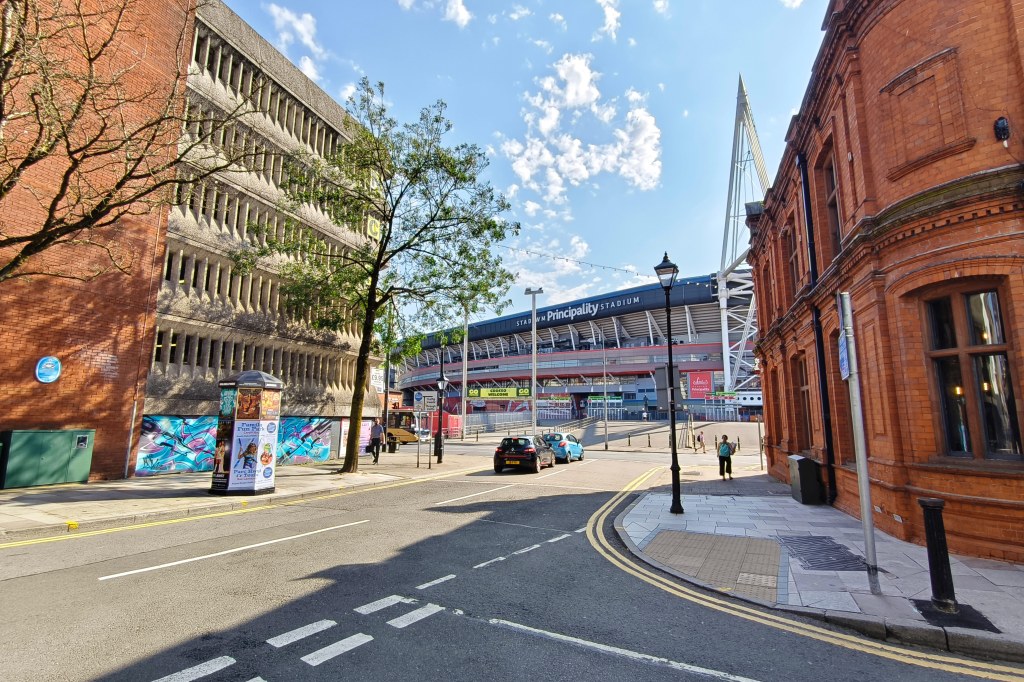
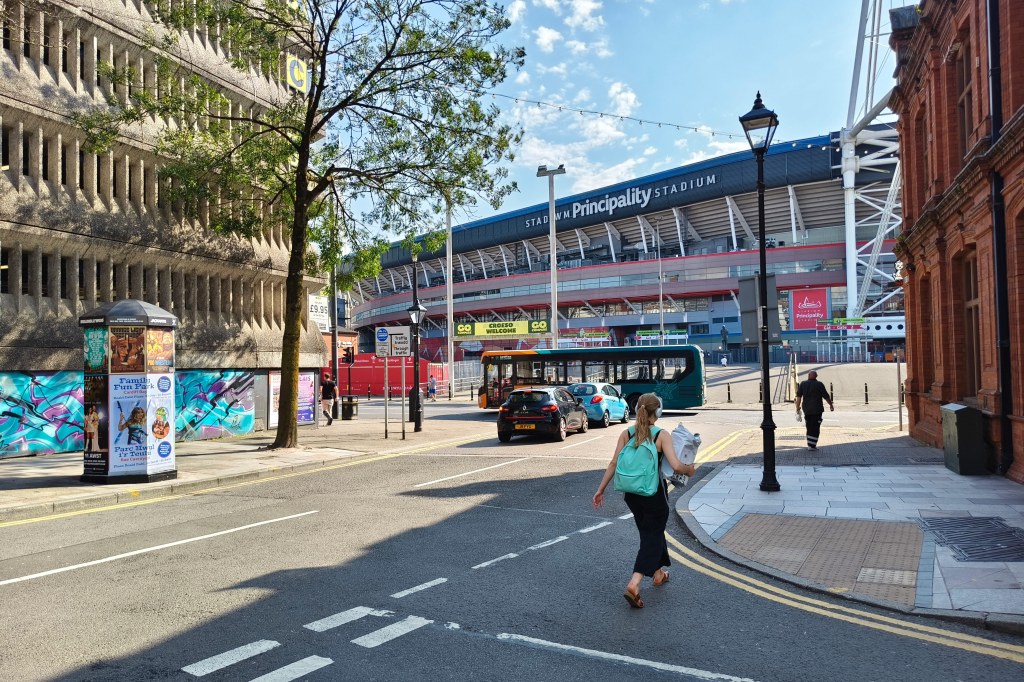


If we have a look at the zoom range above, you can see how you can go from ultrawide to 50x zoom. The 4x is also a digital option but actually produces usable results. I wouldn’t bother with the 50x digital option unless absolutely desperate, but you can get some good results in between, up to around 10x.
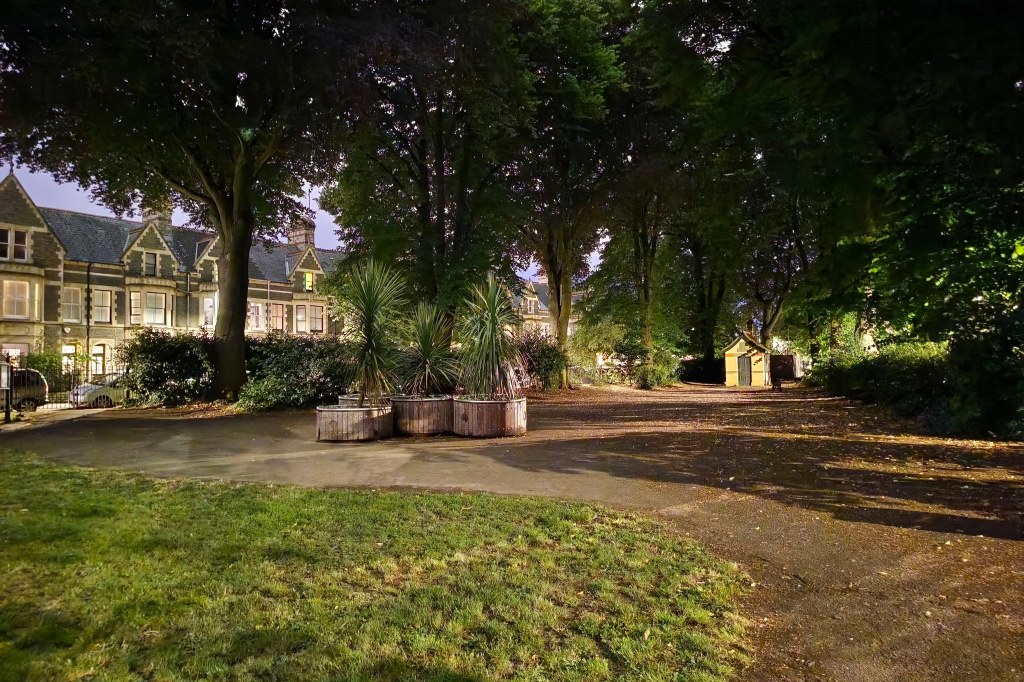
With low light, you can get some usable results, particularly if there is at least a little bit of light somewhere in the scene. In very dark scenarios, the results are a little less impressive, with the phone sometimes going a bit overboard to produce an unrealistic result – making it look brighter than it is. You get the best results from the 1x lens, as I’d generally expect. The ultrawide and the telephoto lenses do OK, especially again for the price point.

Portrait mode does a great job, and if you’re interested mainly in portraits this should be a good contender for your cash. The range of different modes makes it great fun and you get some fantastic results, especially if you turn off the image smoothing. Outlines are in general fairly good, but as we often see with phones, sometimes it can look a bit fake if you examine closely – especially if there’s anything complex going on in the background. The aura light comes in useful for filling in light, too.

The selfie camera does a good job as well. It’s quite rare to see such a high-resolution selfie camera, especially at this price point, and especially that has AF too. There are again strange face smoothing effects, which you can choose to leave on if you like, but I much prefer the “real” version of my face.

Not having an automatic macro option is a shame, but, for a mid-range phone it’s not wholly unexpected – some flagships don’t have a macro option at all. The super mcro option gets you pretty close and while the results aren’t amazing if you examine them closely, it’s again pretty good for using at small sizes and so on.
Video is available up to 4K 60fps, but at that frame rate you don’t get stabilisation. That means that your handheld results can be a little shaky at times. Switching to the 30fps option results in much smoother video. Generally though, detail and quality is good and it’s certainly more than good enough for the typical types of clips most phone users will be wanting to record.
Value for Money
At the time of writing, the V40 Pro is only available in India. There it will cost you INR ₹ 49,999 for the 8GB RAM/256GB storage option, or INR ₹ 55,999 for the 12GB RAM / 512GB storage option. That puts it at around £468/£525 if we do a straight currency conversion. That means it follows on from the V30 Pro in terms of pricing, being around $500/£500 equivalent. That would mean it sits firmly in the mid-range and compares with models such as the Google Pixel 8a, Honor 200 Pro and the Samsung Galaxy S23.
Hopefully it will eventually come to other markets, such as the US and Europe, as this is a great phone for the expected price and should represent decent value for money.

Verdict
There’s a lot to be impressed by with the Vivo V40 Pro, with lots of good specifications in an attractive device that is well-priced.
In terms of the camera, and therefore image quality, this doesn’t represent a big leap in quality from its predecessor, the V30 Pro. Considering that’s less than a year old, that’s no surprise. The improvements come from elsewhere, such as having a bigger battery and a new IP68 waterproof rating – both of which are welcome improvements.
On the whole, image quality – albeit not improved from before – is great. It also looks nice and has a great native camera app. I find the Portrait mode to be particularly impressive, and it produces some lovely results too.
The biggest downside here is that the Vivo V40 Pro is not available widely. For the time being, only India has it. Hopefully it’ll come to other markets as it could represent one of the best mid-range phones on the market, and certainly one of the best for portraits. For those that can buy it, it comes highly recommended.

Specifications
| Wide camera | 50MP Sony IMX921 1/1.56” Sensor, f/1.9, 23mm equivalent lens, OIS |
| Ultra-wide camera | 50MP 1/2.76” sensor, f/2.0, 15mm equivalent lens |
| Telephoto camera | 50MP Sony IMX816 1/2.51” sensor, f/1.9, 50mm equivalent lens |
| Selfie camera | 50MP f/2.0 selfie camera with AF |
| Display | 6.78-inch AMOLED, 120Hz, 2800 x 1260, 4500 nits peak brightness |
| Operating system | Funtouch OS 14 (Based on Android 14) |
| Dimensions | 164.16 x 74.93 x 7.58mm |
| Weight | 192g |
Related reading:
- Why the Vivo V30 is better than the Google Pixel 7a
- Vivo X100 Pro Review – Sensational phone that’s almost perfect
- Vivo V30 Pro Review – Zeiss goes mid-range
Follow AP on Facebook, Twitter, Instagram, YouTube and TikTok.

